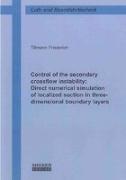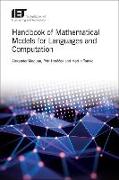- Start
- Control of the secondary crossflow instability: Direct numerical simulation of localized suction in three-dimensional boundary layers
Control of the secondary crossflow instability: Direct numerical simulation of localized suction in three-dimensional boundary layers
Angebote / Angebote:
Transition control by localized "pinpoint" suction in a three-dimensional boundary- layer flow with crossflow is investigated by means of direct numerical simulation. The control of large-amplitude steady crossflow vortices with active secondary instability constitutes hereby an alternative promising possibility to maintain laminar flow on relevant regions of airliner wings (active laminar flow control) resulting in a significant reduction of drag and thus also of greenhouse gas emissions.
Up to date, laminar flow control applied to tackle crossflow instability aims at a reduction of the primary crossflow instability, i.e. hindering the development of large-amplitude, secondarily unstable crossflow vortices. The classically applied homogeneous suction focuses on reducing the crossflow in the quasi two-dimensional base flow which results in hindered growth of crossflow vortices, later-induced secondary instability and hence delayed laminarturbulent transition. On the other hand, techniques like the "distributed roughness elements" method or "distributed flow deformation" excite locally stable or weakly unstable crossflow vortex modes, leading to "benign" crossflow vortices that are spaced narrower than the naturally amplified ones while suppressing all other modes, including the most unstable ones. In the current work, the three-dimensional nonlinear disturbance state with large-amplitude steady crossflow vortices including already active secondary instability is controlled by means of pinpoint hole suction. The influence of hole-suction modeling on the effects of pinpoint suction is checked in the first part of the work where results from a numerically extensive compressible simulation are discussed that comprises the channel flow below the suction orifice. Although the actual wall-normal velocity distribution in the suction hole deviates from the modeled prescribed distribution, it is shown that at equal mass flux the effects on the crossflow vortex are virtually identical and secondary instability is equally attenuated.
In the second part of the work, localized pinpoint suction through holes is activated below the updraft side of the primary vortices. It is shown that the overall vortical motion is reduced by the imposed negative wall-normal velocity component while simultaneously the growth of unstable high-frequency secondary instability modes is attenuated that are located in a high-shear layer above the suction holes. Thereby, the associated flow field is stabilized and laminar-turbulent transition is significantly delayed or suppressed. A case with homogeneous suction at equal suction rate is shown to be virtually ineffective at this transition stage, while cases with slit suction, where the slits extend in spanwise direction, perform still well, however, the attenuation found in cases with concentrated hole suction is not reached. In all considered setups the suction-induced increased wall shear is by far overcompensated by the much stronger decrease due to the transition delay resulting in an overall effective drag reduction.
Libri-Titel folgt in ca. 2 Arbeitstagen




